Article-at-a-Glance
- Amazon FBA requires higher upfront investment but offers better customer trust and potentially higher profit margins long-term.
- Dropshipping needs minimal startup capital and carries less inventory risk, making it accessible for beginners with limited funds.
- FBA sellers spend more time on product research and development while dropshippers focus on marketing and supplier relationships.
- The average Amazon FBA seller makes $1,000-$25,000 monthly with 20-40% margins versus dropshipping’s 15-30% margins.
- Your ideal business model depends on your available capital, time commitment, and whether you prioritize brand building or quick market testing.
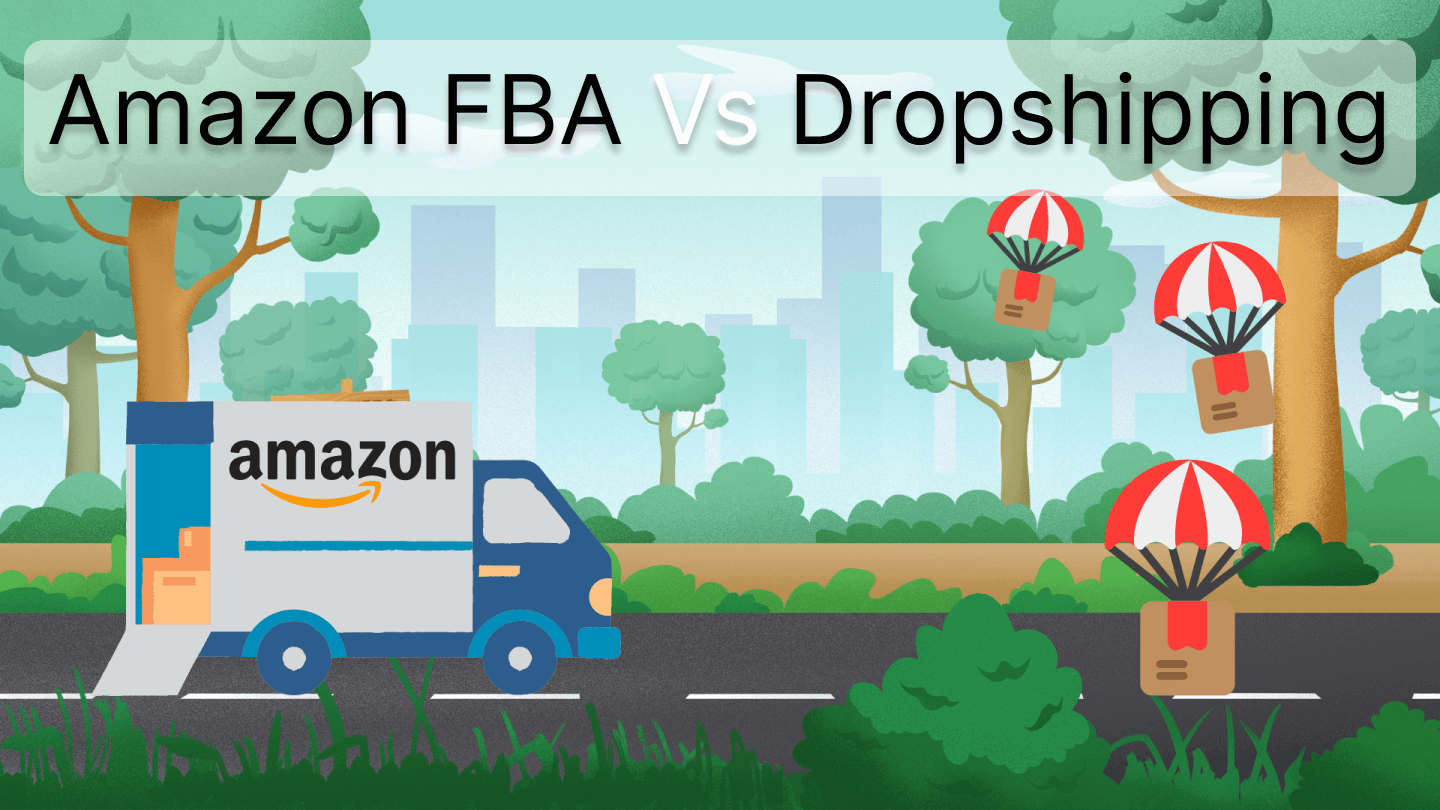
“Amazon FBA vs Dropshipping: Best …” from www.repricer.com and used with no modifications.
Making the right choice between Amazon FBA and dropshipping could be the difference between a thriving e-commerce business and one that struggles to get off the ground. Both models have created thousands of successful entrepreneurs, but they follow fundamentally different approaches to online selling. Your personal circumstances, goals, and resources will ultimately determine which path offers you the best chance at e-commerce success.
The $100K Question: Amazon FBA vs Dropshipping
When you’re looking to build a six-figure e-commerce business, choosing the right fulfillment model is crucial. Amazon FBA (Fulfillment by Amazon) and dropshipping represent two distinct approaches to selling products online without needing your own warehouse. With FBA, you purchase inventory upfront and send it to Amazon’s warehouses, while dropshipping allows you to sell products without ever touching inventory. The model you choose will impact everything from your daily operations to your profit margins and growth potential.
- Amazon FBA: Higher barrier to entry, stronger customer trust, better fulfillment experience
- Dropshipping: Lower startup costs, more flexibility, higher operational demands
- Key considerations: Available capital, time commitment, growth goals, product type
- Timeline to profitability: 3-6 months for FBA vs 1-3 months for dropshipping
Your choice isn’t permanent—many successful e-commerce entrepreneurs eventually incorporate both models as their businesses evolve. Understanding the fundamental differences helps you make an informed decision based on your current resources and long-term vision.
How Amazon FBA Works
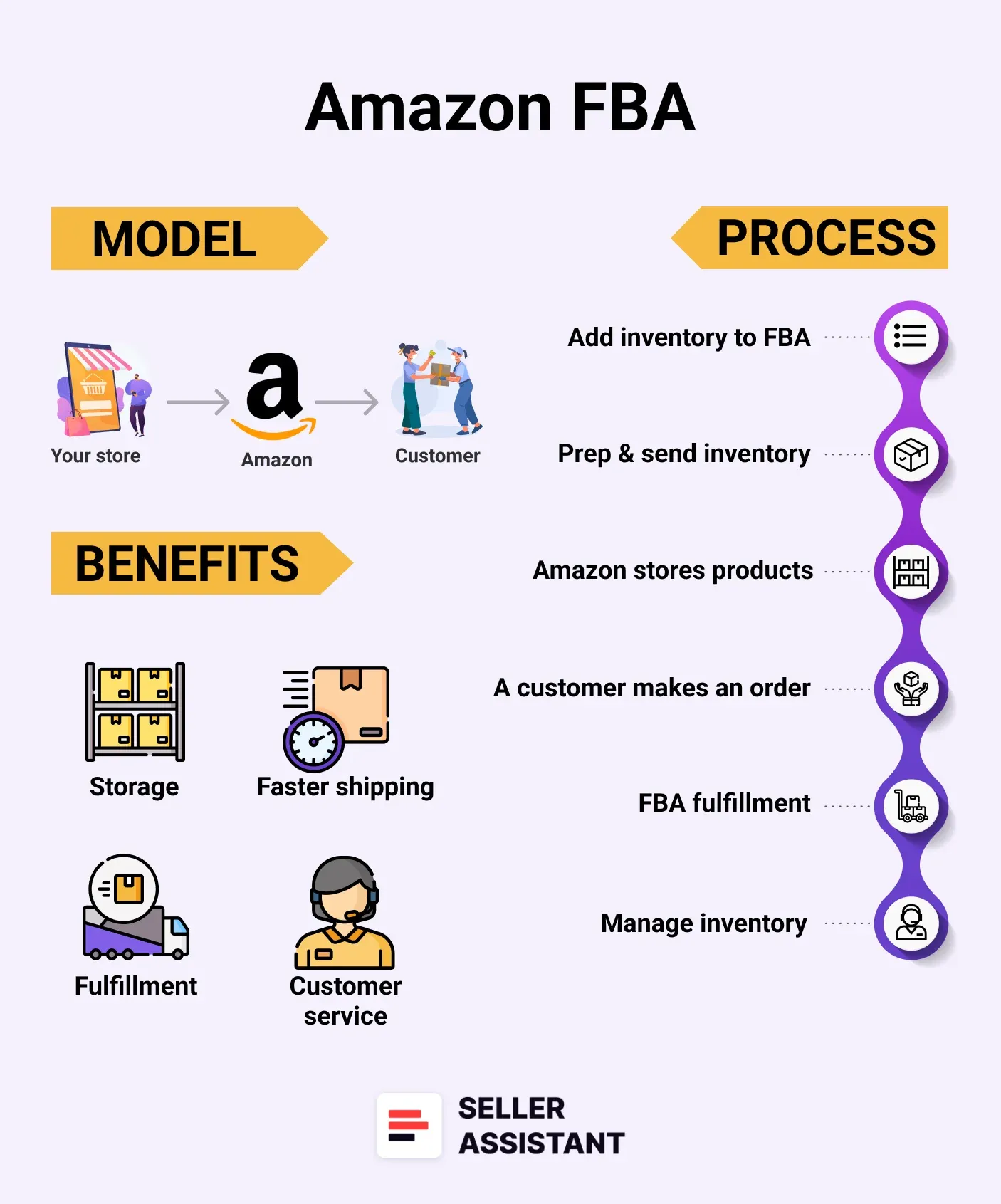
“How Does Amazon FBA Work. Is Amazon FBA …” from www.sellerassistant.app and used with no modifications.
Amazon’s Fulfillment by Amazon service has revolutionized e-commerce by allowing sellers to leverage the retail giant’s world-class logistics network. The core premise is simple: you send your products to Amazon, and they handle practically everything else. This creates a nearly hands-off selling experience once your products are in Amazon’s system.
For those interested in alternative e-commerce methods, exploring dropshipping trends and opportunities might be worthwhile.
Send Your Products to Amazon’s Warehouses
The FBA process begins with inventory procurement. You’ll need to source products, either through manufacturing, wholesale, or retail arbitrage. Once you have your inventory, you’ll create shipments in your Amazon Seller Central account, print the necessary labels, and send your products to Amazon’s fulfillment centers. This step requires careful planning as improper preparation can result in additional fees or rejected shipments. Many sellers use prep services to ensure their products meet Amazon’s strict requirements before reaching the fulfillment centers.
Amazon Handles Storage, Packing, and Shipping
Once your products arrive at Amazon’s warehouses, they’re stored until a customer places an order. When a sale occurs, Amazon employees pick, pack, and ship the product to your customer—often with rapid Prime delivery. This is where FBA truly shines compared to most dropshipping operations. Your customers receive their orders quickly, professionally packaged, with tracking information automatically provided.
- Products become eligible for Amazon Prime and free shipping
- Amazon handles returns and customer service inquiries
- Your inventory is distributed across multiple fulfillment centers for faster delivery
- Sales velocity affects inventory placement and shipping speed
This fulfillment infrastructure is nearly impossible for independent sellers to replicate, giving FBA sellers a significant advantage in customer experience. The Prime badge alone can increase product visibility and conversion rates by 30-50%, according to many seller reports.
You Pay for Storage and Fulfillment Fees
Amazon’s world-class fulfillment doesn’t come free. FBA sellers pay two primary fee types: fulfillment fees (covering picking, packing, shipping, customer service, and returns) and storage fees (based on the volume your products occupy in their warehouses). Fulfillment fees vary by size and weight, while storage fees fluctuate seasonally, with higher rates during Q4 holiday months. Long-term storage fees also kick in for inventory that remains unsold after 365 days, creating pressure to maintain healthy inventory turnover.
For those interested in e-commerce, here’s a guide on how to start an e-commerce business.
How Dropshipping Works

“Dropshipping for Dummies Explained by …” from www.bluehost.com and used with no modifications.
Dropshipping operates on a fundamentally different principle than FBA: you sell products you don’t physically own or handle. Instead of purchasing inventory upfront, you act as a middleman between suppliers and customers. This creates a capital-efficient business model with unique advantages and challenges.
List Products Without Owning Inventory
The dropshipping journey begins by selecting products from supplier catalogs and listing them on your sales channels—whether that’s your own Shopify store, eBay, Walmart Marketplace, or even Amazon. You’ll set your own prices, typically marking up the supplier’s cost by 15-45% depending on the product category and competition. The beauty of this model is that you can list hundreds or even thousands of products without investing a dollar in inventory. This allows for rapid testing of different product categories to find winners before committing significant resources.
Customer Orders Trigger Supplier Fulfillment
When a customer places an order through your store or marketplace listing, the real magic of dropshipping happens. You collect the payment from the customer at your retail price, then purchase the item from your supplier at the wholesale price. You’ll provide the customer’s shipping details to your supplier, who then packages and ships the product directly to your customer. This hands-off fulfillment process is what makes dropshipping so appealing to entrepreneurs looking for minimal operational complexity.
The key to successful dropshipping lies in supplier reliability. A supplier that ships orders promptly, maintains accurate inventory counts, and provides quality packaging directly impacts your customer satisfaction and return rates. Many dropshippers work with multiple suppliers to mitigate risk and expand their product offerings without additional overhead.
You Keep the Profit Margin Between Sale and Cost
The dropshipping business model generates profit from the difference between your retail price and the total costs, which include the wholesale product price, shipping fees, marketplace fees, and payment processing charges. For example, if you sell a product for $30 that costs $15 from your supplier with $5 in shipping and $3 in platform fees, you’d earn a $7 profit per sale. While individual order profits may seem modest, the model’s strength comes from the ability to scale without proportional increases in operational complexity.
Unlike FBA, dropshipping doesn’t require inventory investment, allowing you to redirect capital toward marketing and customer acquisition. However, this also means suppliers control product quality and shipping times, creating vulnerabilities in your business model that require careful supplier vetting and relationship management.
Startup Costs: What You’ll Need to Invest
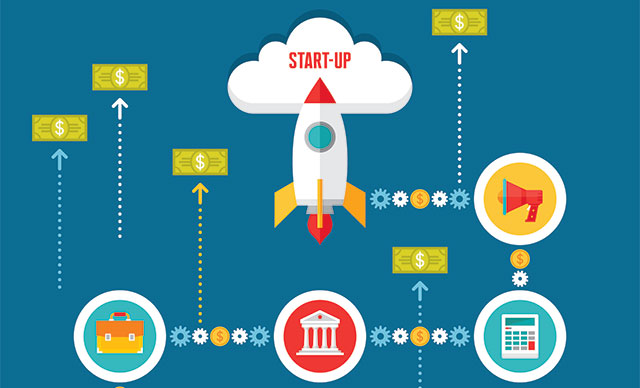
“Startup costs: Book vs. tax treatment” from www.journalofaccountancy.com and used with no modifications.
The financial barrier to entry represents one of the starkest contrasts between Amazon FBA and dropshipping. Your available capital will significantly influence which model makes more sense for your situation, particularly when first starting your e-commerce journey.
Amazon FBA Initial Investment ($2,000-$5,000+)
Launching an Amazon FBA business requires substantial upfront capital. The largest expense is inventory, with most successful sellers investing $1,500-$3,000 on their first product order to meet minimum order quantities and achieve reasonable unit economics. Beyond inventory, you’ll need to budget for product photography ($200-$500), UPC codes ($30-$100), shipping to Amazon’s warehouses ($200-$500), and potential product testing/certification ($100-$1,000 depending on category).
The professional seller account costs $39.99 monthly, and many sellers utilize tools like Jungle Scout or Helium 10 ($50-$100/month) for product research and listing optimization. All told, most new FBA sellers should prepare to invest $2,000-$5,000 before seeing their first sale, with some product categories requiring $10,000+ to launch effectively.
Amazon FBA Startup Costs Breakdown
Inventory: $1,500-$3,000
Photography: $200-$500
UPC/FNSKU: $30-$100
Shipping to Amazon: $200-$500
Professional Seller Account: $39.99/month
Research Tools: $50-$100/month
PPC Initial Budget: $300-$500
Dropshipping Initial Investment ($100-$500)
Dropshipping presents a dramatically lower financial barrier to entry. With no inventory purchases required, your initial investment primarily covers store setup and marketing. A basic Shopify store costs $29/month, while dropshipping apps like Oberlo or DSers range from free to $30/month. Domain registration adds another $10-$15 annually.
For marketplace dropshipping on platforms like eBay or Walmart, you’ll primarily need to budget for listing fees and potential store subscriptions ($0-$60/month). Most new dropshippers allocate $100-$300 for initial marketing tests to validate product selections before scaling successful campaigns. This capital-efficient model allows entrepreneurs to start with as little as $100-$500, making it accessible to those with limited resources.
Hidden Costs That Most Beginners Miss
Both business models come with unexpected expenses that can derail unprepared entrepreneurs. For FBA sellers, long-term storage fees, inventory disposal costs, account suspensions, and unexpected returns can quickly erode profits. Many new sellers underestimate Amazon PPC advertising costs, which have increased significantly in recent years and can consume 15-25% of revenue for competitive categories.
Dropshippers face their own set of hidden costs, including supplier price increases, chargebacks from customer disputes, rising ad costs on platforms like Facebook and Instagram, and potential account suspensions requiring new store setups. The biggest hidden cost for dropshippers is often the learning curve itself—many spend thousands on courses and mentorship programs to overcome the model’s operational complexities.
Profit Potential: Show Me the Money
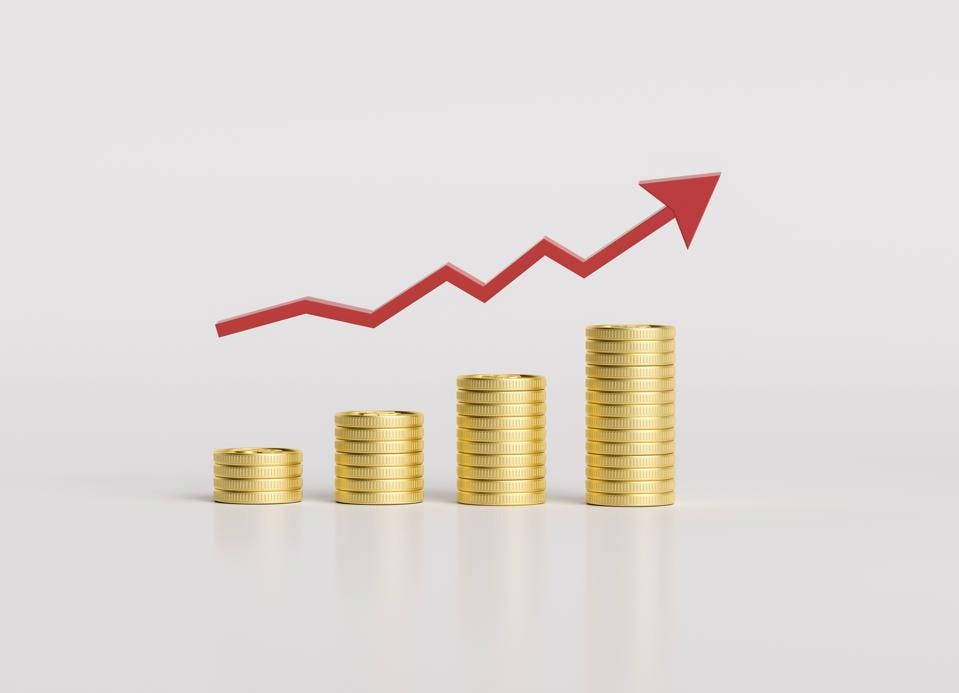
“Unlocking Profit Potential: Strategies …” from www.forbes.com and used with no modifications.
When evaluating Amazon FBA against dropshipping, understanding the realistic profit potential of each model helps set appropriate expectations. Both can generate significant income, but they follow different profit patterns and timelines.
Typical Amazon FBA Profit Margins (20-40%)
Amazon FBA businesses typically achieve net profit margins between 20-40% after accounting for all costs. Product category significantly impacts margins—commoditized categories like electronics might yield only 10-15% profit, while unique or private-label products can generate 35-45% margins. The FBA model benefits from economies of scale, with larger order quantities typically reducing your per-unit costs while maintaining selling prices.
According to Jungle Scout’s seller survey, about 50% of Amazon FBA sellers make between $1,000 to $25,000 per month in revenue, with experienced sellers frequently reaching $50,000+ monthly. After subtracting Amazon’s fees, shipping costs, PPC advertising, and overhead, net profits generally range from 15-30% of revenue for established sellers.
The profit stability in FBA often exceeds dropshipping once established. Having inventory stocked at Amazon provides consistent sales without relying on day-to-day supplier availability. This stability comes at the cost of capital tied up in inventory and potentially slower adaptation to market changes.
For those interested in exploring this further, here’s a guide on how to start an e-commerce business.
Most successful FBA sellers reinvest a significant portion of profits into inventory expansion during their first 12-24 months, creating a compound growth effect that accelerates their business. This reinvestment strategy typically leads to higher long-term profitability compared to dropshipping, provided the product selection process was sound.
- Private label products generally offer 30-45% profit margins
- Wholesale products typically yield 15-25% profit margins
- Retail/online arbitrage can produce 25-100% margins but with limited scalability
- Seasonal products may offer higher margins but with concentrated sales periods
- Established FBA brands can command premium prices, pushing margins higher
Typical Dropshipping Profit Margins (15-30%)
Dropshipping businesses generally operate with thinner margins than FBA operations, typically netting 15-30% profit after all expenses. The absence of inventory investment is counterbalanced by higher per-unit product costs, as dropshippers can’t access the volume discounts available to inventory-holding sellers. Shipping costs also significantly impact profitability, especially for dropshippers using overseas suppliers with extended delivery timeframes.
The average successful dropshipper generates $200-$3,000 in monthly profit during their first year, with established operations potentially scaling to $5,000-$10,000 monthly. The model’s profit potential is highly dependent on marketing efficiency—dropshippers who master paid advertising or social media marketing typically achieve substantially higher profits than those relying solely on marketplace traffic.
Profit consistency presents a major challenge for many dropshippers. Supplier stock-outs, shipping delays, and marketplace policy changes can rapidly transform profitable products into liabilities. Successful dropshippers mitigate these risks through supplier diversification and constant product testing to replace underperforming offerings.
For those looking to explore other avenues, understanding how to start an e-commerce business can provide valuable insights into alternative strategies.
The most profitable dropshipping operations tend to focus on high-ticket items ($200+) where even a modest 15% margin yields significant per-order profit. These higher-value sales can offset the increased customer service demands typically associated with expensive purchases.
For those looking to dive deeper into this business model, here’s a guide on how to start an e-commerce business.
- General merchandise typically yields 10-20% profit margins
- Niche products can achieve 20-30% margins with proper supplier relationships
- Print-on-demand dropshipping often delivers 30-40% margins on customized items
- Domestic dropshipping suppliers offer lower margins but faster shipping and fewer complications
- High-ticket dropshipping can produce $100+ profit per sale with proper pre-sale qualification
Volume vs. Margin: The Real Revenue Equation
The true profit potential of both models hinges on the balance between sales volume and profit margin. FBA businesses typically benefit from Amazon’s massive traffic and Prime eligibility, generating higher sales volumes that compensate for fees. A successful FBA product might sell 10-30 units daily at a $10 profit per unit, creating $3,000-$9,000 monthly profit from a single product. Dropshippers often work with slimmer margins but can list hundreds or thousands of products simultaneously, with top performers generating 1-3 sales daily across multiple SKUs.
For those interested in venturing into online retail, here’s a guide on how to start an e-commerce business.
Income Timeline: When You’ll Actually See Profits
FBA businesses typically take 3-6 months to become profitable as sellers navigate the learning curve, establish inventory, and optimize listings and PPC campaigns. Dropshipping operations can achieve profitability faster—often within 1-3 months—but typically generate lower initial income while sellers identify winning products and reliable suppliers. Both models require patience and consistent reinvestment during the early stages, with most entrepreneurs reaching sustainable full-time income levels after 12-18 months of dedicated effort and optimization.
Risk Factors: What Could Go Wrong

“5,700+ Risk Factors Stock Photos …” from www.istockphoto.com and used with no modifications.
Both Amazon FBA and dropshipping carry significant risks that can derail even well-planned businesses. Understanding these potential pitfalls before you start can help you implement protective measures and develop contingency plans. No e-commerce model is completely secure, but proper preparation can significantly improve your chances of long-term success.
The most successful e-commerce entrepreneurs don’t avoid risk—they anticipate it and build systems to mitigate its impact. This risk management approach often becomes the difference between businesses that survive market fluctuations and those that collapse at the first significant challenge.
Amazon FBA Risks (Account Suspension, Inventory Issues)
Amazon FBA businesses face several major risk categories that can threaten profitability and sustainability. Account suspension represents the most severe risk, as Amazon can restrict selling privileges with minimal notice if they detect policy violations, authentic product concerns, or performance issues. Recovering from suspensions often takes weeks or months, during which inventory remains inaccessible while storage fees continue accumulating. Inventory problems present another significant risk category, including slow-moving stock incurring long-term storage fees, damage during fulfillment, inventory loss, and unexpected FBA fee increases that erode margins. Many sellers also face intellectual property complaints from brands or patent trolls, which can result in listing removals or account suspensions regardless of merit. Finally, Amazon’s algorithm changes and increasing competition in popular categories constantly threaten visibility and conversion rates, requiring ongoing optimization and occasional product pivots.
Dropshipping Risks (Supplier Problems, Platform Changes)
Dropshipping businesses face their own unique set of risks, with supplier reliability at the top of the list. When suppliers run out of stock, ship late, or send defective products, dropshippers bear the full brunt of customer dissatisfaction despite having limited control over fulfillment. Payment gateway and marketplace restrictions have increasingly targeted dropshipping operations, with platforms like PayPal occasionally holding funds for extended periods or marketplaces implementing stricter dropshipping policies. Customer expectations regarding shipping times have also increased dramatically, making it difficult for dropshippers using overseas suppliers to meet satisfaction standards without sacrificing margins for expedited shipping. The model’s low barrier to entry also creates intense competition, with successful products quickly attracting numerous copycat sellers who drive down prices and margins. Many dropshippers also face the constant risk of supplier price increases, which can transform profitable products into money-losers overnight if selling prices cannot be adjusted accordingly.
How to Protect Your Business
Risk mitigation strategies differ between the two business models, but diversification stands as the universal protection method. FBA sellers should spread inventory across multiple products rather than relying on a single bestseller, maintain backup supplier relationships to prevent stockouts, and consider expanding to additional marketplaces like Walmart.com or their own Shopify stores. Diligent compliance with Amazon’s policies, proactive monitoring of account health metrics, and maintaining detailed records of all supplier communications and product authenticity documentation provide additional protection. Dropshippers should focus on developing relationships with multiple reliable suppliers for each product, implementing strict quality control measures like sample orders before scaling, and building sufficient profit margins to absorb occasional refunds or shipping upgrades when fulfillment issues arise. For both models, maintaining adequate cash reserves to weather unexpected challenges and continuously testing new products or marketing channels prevents overreliance on any single revenue stream.
The Decision Framework: Which Model Is Right For You?
Choosing between Amazon FBA and dropshipping shouldn’t be based solely on which model seems more profitable in general. Your personal circumstances, resources, and goals should drive this critical decision. The right model for you aligns with your available capital, risk tolerance, time availability, and long-term business vision.
Many successful e-commerce entrepreneurs eventually incorporate elements of both models as their businesses mature. Starting with the model that best fits your current situation provides the fastest path to profitability while building transferable skills that support future expansion. This strategic approach recognizes that business models should adapt as circumstances change rather than remaining rigidly defined.
Choose Amazon FBA If…
Amazon FBA makes the most sense if you have $2,000-$5,000 available to invest upfront, prefer focusing on product development rather than marketing, and prioritize building a sellable asset with long-term brand value. FBA also proves advantageous for those who want to leverage Amazon’s massive built-in traffic, prefer a more hands-off fulfillment approach once products are stocked, and have the patience for a slightly longer path to profitability with potentially higher long-term returns. The model particularly suits entrepreneurs with product development experience, those willing to navigate more complex regulations and requirements, and individuals seeking to build a business that could eventually be sold at a significant multiple of annual profits. FBA’s structured ecosystem provides clearer benchmarks for success but demands greater initial investment and commitment to specific product categories.
Choose Dropshipping If…
Dropshipping represents the better option if you have limited startup capital (under $500), need to generate cash flow quickly, and want the flexibility to test multiple product categories with minimal commitment. The model suits entrepreneurs who enjoy digital marketing and website optimization, prefer avoiding inventory management completely, and want maximum location independence without warehouse or shipping concerns. Dropshipping particularly benefits those with strong supplier negotiation skills, individuals comfortable with higher operational demands and customer service requirements, and entrepreneurs who prioritize rapid market testing over long-term brand building. The model’s flexibility allows for quick pivots when market conditions change, but this adaptability comes with greater day-to-day management requirements and typically smaller profit margins.
Consider a Hybrid Approach When…
A hybrid approach combining elements of both models works exceptionally well for established e-commerce businesses seeking expansion and risk diversification. This approach typically involves starting with dropshipping to identify winning products with proven demand, then transitioning best-sellers to FBA for improved fulfillment speed and reliability once sufficient data confirms sustainable sales potential. The hybrid model allows you to minimize inventory risk while still building brand equity, leverage Amazon’s traffic while developing independent sales channels, and balance cash flow needs with long-term asset building. Many seven-figure e-commerce operations evolve toward this hybrid approach as they mature, using dropshipping for product testing and expansion while focusing FBA investments on proven winners with established sales history.
Your business model should ultimately reflect your personal strengths and weaknesses. If you excel at product research and development but struggle with marketing, FBA likely offers your best path. If you’re highly adaptable and enjoy testing multiple approaches quickly, dropshipping provides the flexibility to leverage those strengths.
Remember that neither model represents a guaranteed path to success. Both require dedicated effort, continuous learning, and persistent optimization to achieve significant profitability. The most successful entrepreneurs choose the model that aligns with their resources and skills, then execute with disciplined consistency rather than constantly switching approaches.
For those looking to delve deeper into entrepreneurship, here’s a guide on how to start an e-commerce business.
Your Action Plan: Next Steps Today
- Assess your available startup capital and determine if it aligns better with FBA’s higher investment needs or dropshipping’s lower entry barrier
- Evaluate your timeline to profitability needs—if you need income quickly, dropshipping typically offers a faster path to initial sales
- Research product opportunities in both models using tools like Jungle Scout for FBA and product research tools like Sell The Trend for dropshipping
- Join model-specific communities (Amazon FBA Facebook groups or dropshipping forums) to learn from others’ experiences
- Create a 90-day action plan with specific milestones for your chosen model to maintain accountability and momentum
Whichever model you choose, commit to at least 6-12 months of consistent effort before evaluating its viability for your situation. Most e-commerce failures stem from inconsistent execution or premature model switching rather than choosing the “wrong” approach initially. Success in either model requires persistence through the inevitable learning curve and challenges.
Consider starting with small test cases before full commitment. For FBA, this might mean launching with a single product in the $1,500-$2,000 investment range. For dropshipping, begin with 20-30 carefully selected products rather than importing hundreds of untested items. This measured approach allows you to refine your processes while limiting potential losses during the learning phase.
If you’re new to the industry, you might find it helpful to explore how to start an e-commerce business to gain a better understanding of the market dynamics.
Remember that your first product or store likely won’t be your most successful. Both models involve significant learning that improves results over time. The experiences gained from initial launches—even unsuccessful ones—provide invaluable insights that substantially increase success probabilities for subsequent attempts.
Frequently Asked Questions
Certain questions consistently arise during the process of choosing between Amazon FBA and dropshipping. The following answers address the most common concerns and misconceptions about both business models.
Is Amazon FBA or dropshipping better for beginners?
For absolute beginners with limited funds (under $500), dropshipping typically provides an easier entry point with lower financial risk. The model allows new entrepreneurs to learn fundamental e-commerce skills like product selection, pricing strategy, and customer service without significant upfront investment. However, beginners with $2,000-$5,000 available and a willingness to learn Amazon’s ecosystem may find greater long-term success with FBA due to its more structured environment and built-in customer base.
The ideal approach for many beginners combines elements of both models: start with dropshipping to learn product selection and marketing fundamentals, then transition to FBA once you’ve identified profitable products and developed basic e-commerce skills. This graduated approach minimizes risk while building capabilities that support long-term business growth regardless of which model ultimately becomes your primary focus.
How much money do I need to start an Amazon FBA business?
While it’s technically possible to start an Amazon FBA business with as little as $500-$1,000 using retail arbitrage (buying discounted products from retail stores to resell on Amazon), building a sustainable private label or wholesale FBA business typically requires $2,000-$5,000 minimum. This investment covers initial inventory ($1,500-$3,000), product photography ($200-$500), UPC codes and packaging ($100-$300), shipping to Amazon ($200-$500), and essential tools and subscriptions ($100-$200 monthly). Categories with higher competition or manufacturing complexity may require $5,000-$10,000+ to launch effectively, while regulated categories like supplements or children’s products often need additional testing and certification costs. Most successful FBA sellers recommend having access to at least $5,000 in initial capital to properly launch and support a product through its early growth phase.
Can I do dropshipping on Amazon?
Yes, dropshipping on Amazon is possible but requires careful adherence to the platform’s specific policies. Unlike traditional dropshipping where customer information is provided directly to suppliers, Amazon’s terms of service require that you remain the seller of record for all transactions. This means you must be identified as the seller on all packing slips, invoices, and external packaging, and must handle all customer service directly rather than redirecting customers to suppliers.
- Amazon specifically prohibits purchasing products from another online retailer and having that retailer ship directly to customers
- All shipments must identify you (not your supplier) as the seller of record
- You remain responsible for the timely delivery of all orders
- Returns and customer service must be handled through your seller account, not redirected to suppliers
- You must comply with all product authenticity and condition requirements
Many successful Amazon dropshippers work with domestic suppliers or utilize intermediary prep centers that receive inventory from suppliers, then properly package and label it before forwarding to customers. While technically more complex than traditional dropshipping, this approach aligns with Amazon’s policies while still avoiding direct inventory ownership.
For those interested in exploring this business model further, here are some dropshipping trends and opportunities to consider.
Be aware that Amazon has increased scrutiny of dropshipping operations in recent years, with account suspension risks for those who violate their specific policies. The safest approach combines dropshipping principles with FBA by using just-in-time inventory: ordering from suppliers only when you have confirmed demand, then shipping to Amazon for fulfillment rather than directly to customers.
For those committed to traditional dropshipping, platforms like Shopify, eBay, or Walmart Marketplace often provide more flexible policies than Amazon while still offering substantial customer traffic.
Which business model is more passive: FBA or dropshipping?
Once properly established, Amazon FBA typically requires less day-to-day operational management than dropshipping, making it the more passive business model. After products are researched, sourced, and shipped to Amazon’s fulfillment centers, the platform handles storage, picking, packing, shipping, and most customer service issues. Established FBA businesses often require just 5-15 hours weekly for inventory management, performance monitoring, and periodic product expansion. In contrast, dropshipping businesses generally demand more consistent attention to supplier communications, order processing, tracking updates, and customer service inquiries, typically requiring 15-30 hours weekly even for experienced operators. The key difference lies in front-loaded versus ongoing work: FBA demands more intensive effort during product launch phases but less daily management thereafter, while dropshipping requires less initial setup but more consistent operational oversight throughout the business lifecycle.
How long does it take to make a profit with each model?
Dropshipping typically yields faster initial profits but with lower dollar amounts, while FBA usually requires more time to become profitable but with higher subsequent returns. The average dropshipping operation generates its first sales within 2-4 weeks and reaches consistent profitability within 2-3 months, though initial profits often range from just $50-$500 monthly. Amazon FBA businesses generally take 3-6 months to become consistently profitable as products gain traction in Amazon’s algorithm and early PPC advertising data informs optimization strategies. However, once profitable, FBA businesses often scale more predictably, with many reaching $2,000-$5,000 monthly profit within their first year. Both timelines assume dedicated effort, proper implementation of best practices, and sufficient marketing or advertising investment. The profit timeline for either model extends significantly for part-time entrepreneurs or those unable to reinvest early revenues into business growth.
Ultimately, your choice between Amazon FBA and dropshipping should align with your specific circumstances, resources, and goals. Neither model guarantees success without proper execution, but both offer viable paths to building profitable e-commerce businesses when approached with realistic expectations and consistent effort. The most important factor isn’t which model you choose, but your commitment to mastering its fundamentals and persistently optimizing your operations as you gain experience.

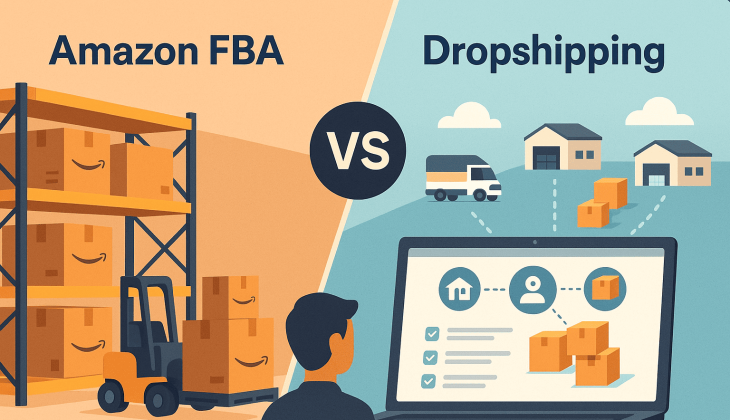
Join the Conversation